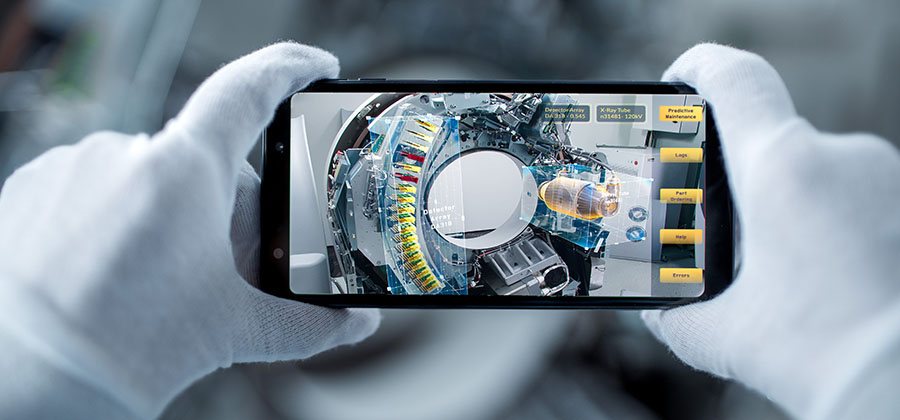
Industrial enterprises are transforming the capabilities of their workforce with audiovisual technology that blends the physical and digital worlds together. Connected workers can now overlay digital data within the context of the real world in order to process information in a way that more effectively maps to the relevant learning and memory systems in the brain.
Technologies like augmented and mixed reality are helping enterprises scale knowledge faster, but with so many products, solutions, and concepts hitting the market it can be hard to keep up with all the different terminology used to describe them.
AR overlays digital information on top of physical objects or environments, so users can “see” both at the same time in the context of each other. AR experiences are typically activated by scanning a VuMark or image target with a handheld device or digital eyewear and can include text, graphics, video, animation, and sound.
Industrial AR is particularly powerful for its ability to upskill workers with 3D work instructions and guidance. Each day, more and more organizations are leveraging industrial AR solutions to optimize manufacturing operations, improve field service outcomes, accelerate training and onboarding, and supercharge sales and marketing efforts. As the aging workforce retires over the coming years, AR will play a prominent role in transferring knowledge and documenting procedures, while generating millions in savings for adopters of the technology.
Similar to AR, mixed reality blends the physical and digital worlds into a programmed experience that lets users visualize and interact with digital information like 3D overlays and real-time data. The difference from AR is that digital objects are not just superimposed onto a mixed reality environment, they’re integrated into it. Because of this, mixed reality experiences require a more immersive, hands-free device like the Microsoft HoloLens.
Like AR, mixed reality solutions are helping industrial enterprises deliver valuable insight into their equipment and products in a visual, easily consumable way. Users of mixed reality solutions can visualize what’s going on inside a machine and prevent failures and downtime with predictive maintenance alerts, rapid parts identification, and easy-to-follow repair sequences. Check out Howden’s story to learn how they’re using mixed reality to deliver a better end user experience to customers.
While AR and MR help to boost the productivity of workers and share many of the same industrial use cases, virtual reality differs in that it prevents users from being physically active by fully immersing them into the virtual world. VR encompasses a user’s entire field of vision to transport them into another location entirely, rendering them incapable of safely performing any kind of physical tasks. As such, VR is currently better suited for the gaming and entertainment industry than as an on-the-job workforce productivity tool. However, virtual reality has shown promise as an effective tool for training scenarios that require a controlled simulation environment.
AR and MR are transforming the way that industrial companies deliver critical information to their workforce. Authoring solutions like Vuforia Studio and Vuforia Expert Capture make it simple and easy to create scalable AR and MR content without the need for programmers or developers. Check out our augmented reality page to learn more.
Greg is an avid blogger interested in industrial innovation, technology, and the intersection between the two. As a Content Marketing Specialist for PTC, Greg is excited about how things like virtual and augmented reality, the internet of things, and predictive analytics are shaping the future of manufacturing.
©Copyright 2025. All rights reserved by Modelcam Technologies Private Limited PUNE.